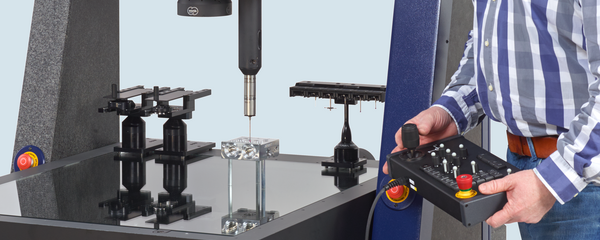Fuel cell stacks made from bipolar plates, such as those used in motor vehicles, enable emission-free vehicle operation. Two half plates (anode and cathode) are joined together to form a bipolar plate. These are used to supply gas or liquid on the one hand and as electrodes on the other, which are used to generate electricity from the oxidation of hydrogen by means of a chemical reaction. The ScopeCheck® FB is suitable for measuring the plates.
These and the associated stamping dies are measured using a VideoCheck® HA (High Accuracy) at a renowned automotive supplier, for example.
Measurement of the tools
The production time for stamping dies is around 80 hours. In order to avoid product rejects, a 100 % inspection with tolerances between 3 µm and 10 µm is required. For this purpose, the entire tool is automatically scanned with the Werth image processing sensor in the patented Raster Scanning HD mode. By superimposing many single images taken during the movement, an overall image of the tool is created. This allows all visible two-dimensional geometrical characteristics to be evaluated very quickly.
As the wave profiles of the tools have very small radii of 0.1 mm, conventional probes are unsuitable for measurement. The patented Werth Fiber Probe® 3D with up to 20 µm small, glass sensing spheres or the non-contact measurement Chromatic Focus Point CFP can be used for highly accurate and fast measurements. Area measurements are possible with the Chromatic Focus Line CFL. The line sensor allows the entire surface of the workpiece to be captured at 10,000 points/mm2. This can be used to determine surface profile deviation, line profile deviation, embossing depth, flank angle and pitch. According to the measurement of the tool center offset, a virtual pairing of the upper and lower tool plates is possible.

Color-coded deviation plot of the surface profile shape of the flow field





